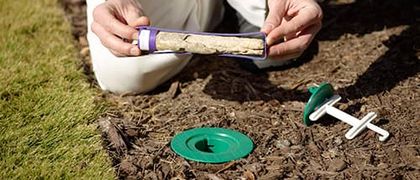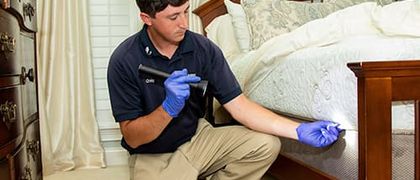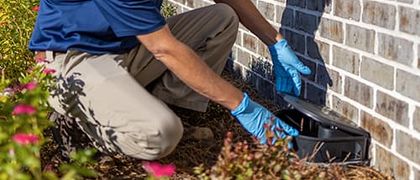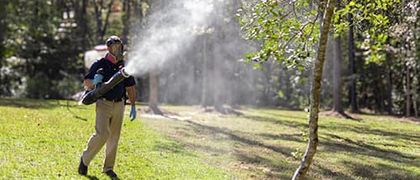Where Do Wasps Nest?
Whether or not you're allergic to wasp stings, no one wants to get stung. If wasps are frequently buzzing around your property, there's always a risk of a painful encounter. Wasps are common and active pests each summer in Florence, Myrtle Beach, and throughout the Pee Dee and Grand Strand areas, becoming more aggressive as late summer and early fall approach.
Knowing where wasps build their nests can help you identify their source and take appropriate action. Since different species of wasps nest in different locations, spotting a nest isn’t always easy. The information below will help you recognize wasp nests around your property and protect your family from painful stings.

Why Wasps Nest Near Homes
Wasps are drawn to neighborhoods, so it’s no surprise they often build nests near homes. Your yard likely provides everything they need: food, water, and suitable shelter.
They may snack on leftovers in open trash bins, feed on blooming flowers in your garden, and find water in pet bowls, puddles, or leaky spigots—essentially a full buffet with drinks included.
When it comes to nesting, wasps prefer quiet, sheltered spots where they won’t be disturbed. Areas like eaves, sheds, attics, and corners of the yard are ideal nesting locations.
Common Wasp Nest Locations
Under Eaves and Roof Overhangs
One of the most common nesting spots is under the roofline. Eaves and overhangs are high off the ground and provide protection from wind and rain.
Inside Sheds, Garages, or Attics
Wasps favor quiet, sheltered areas. If they can access your shed, garage, or attic, they may decide to nest inside.
In Trees, Bushes, and Shrubs
Many wasps build aerial nests that hang from branches or are tucked into shrubs and bushes, safely off the ground.
In Wall Voids or Crawl Spaces
Similar to attics and garages, wall voids and crawl spaces offer hidden nesting areas that are difficult for homeowners to detect.
Underground or in Tree Hollows and Stumps
Some species, like yellow jackets, prefer nesting underground or inside hollow tree stumps. These hidden nests can be especially dangerous because they’re easily disturbed.
How to Spot a Nest Early
The best time to identify a wasp nest is in spring, when colonies are just starting to form. Removing a nest early can help prevent a large infestation later in the season.
As the season progresses, nests grow larger and become easier to spot—but also more dangerous to handle. Look for papery nests ranging in size from a golf ball to a basketball, either elevated or hidden in the ground.
Watch the wasps’ flight patterns to determine where they're coming from. If you suspect a hidden nest, listen for buzzing—especially near walls or enclosed areas.
What To Do If You Find a Wasp Nest
If you discover a well-developed nest, resist the urge to knock it down or spray it with a hose. Even using wasp spray can backfire—literally. Disturbing a nest can trigger aggressive behavior, which can quickly become dangerous.
The safest course of action is to alert your family so they can avoid the area, and then contact the professionals at Harris Pest Control. We’ll remove the nest safely and ensure no one gets stung—especially important if someone in your home is allergic.
Contact Harris Pest Control for Help!
Serving the Pee Dee and Grand Strand areas since 1961, Harris Pest Control is a family-owned business committed to your family’s safety.
Our licensed and highly trained pest control specialists use advanced tools and techniques to remove wasp nests safely and efficiently. We also offer year-round pest control services to prevent wasps—and more than 20 other common pests—from coming back.
For trusted local expertise and fast, effective service, contact Harris Pest Control today.
Additional Services
Get Started Today!









